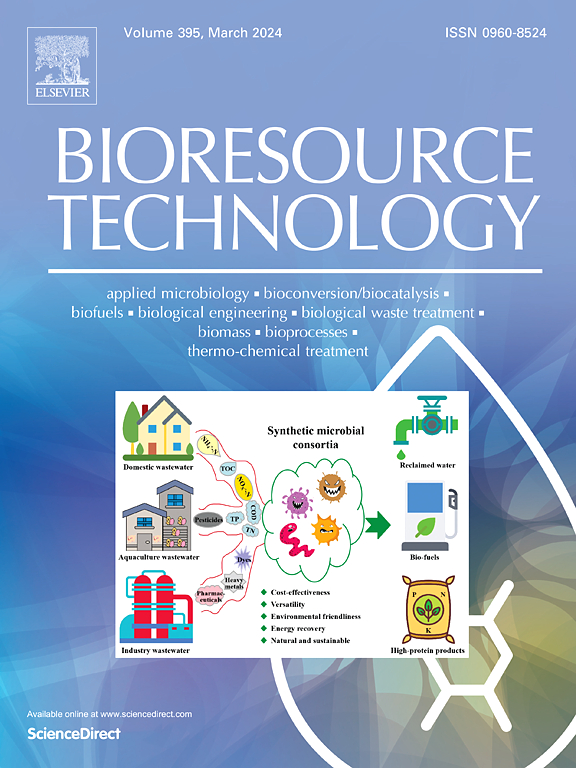细胞外聚合物物质在二氧化钛光催化和生物降解密切耦合系统中的光化学行为。
IF 9.7
1区 环境科学与生态学
Q1 AGRICULTURAL ENGINEERING
引用次数: 0
摘要
细胞外高分子物质(EPS)在水环境中的光敏作用对污染物降解具有重要意义,但其在光催化和生物降解密切耦合(ICPB)中的协同效应尚不清楚。本研究探讨了 EPS 光敏化在 ICPB 中降解 17β-estradiol 3-sulfate (E2-3S) 的关键作用。与 R1(有光照无光催化剂的生物膜)和 R2(有光催化剂无光照的生物膜)相比,松散结合 EPS(LB-EPS)和紧密结合 EPS(TB-EPS)中的蛋白质和多糖含量分别增加了 16.6 倍、9.15 倍和 9.2 倍、2.2 倍。在辐照试验中,LB-EPS 中产生了更多的活性物种,E2-3S 的降解效率达到 99.8%;EPS 中的色氨酸类蛋白首先被转化,而酪氨酸类蛋白则发生了更大的转化;此外,亲水性分子 O/C本文章由计算机程序翻译,如有差异,请以英文原文为准。

Photochemical behavior of extracellular polymeric substances in intimately coupled TiO2 photocatalysis and biodegradation system
Photosensitization of extracellular polymeric substances (EPS) in aqueous environments is significant for pollutants degradation, but the synergistic effects in intimately coupled photocatalysis and biodegradation (ICPB) remain unknown. In this study, the pivotal role of EPS photosensitization in the degradation of 17β-estradiol 3-sulfate (E2-3S) was investigated in ICPB. Protein and polysaccharide contents in loosely bound EPS (LB-EPS) and tightly bound EPS (TB-EPS) increased by 16.6, 9.15 and 9.2, 2.2 times compared with R1 (biofilm with light without photocatalyst) and R2 (biofilm with photocatalyst without light), respectively. During irradiation tests, more reactive species were generated in LB-EPS, and achieving 99.8 % degradation efficiency of E2-3S; tryptophan-like protein in EPS firstly to be converted, while the tyrosine-like protein underwent greater conversion; furthermore, hydrophilic molecules with O/C < 0.45 in EPS decreased and unsaturated molecules with H/C = 0.7–1.5 and O/C = 0–0.1 increased. This study reveals the photosensitization reaction of EPS in ICPB, which provides new insights for pollutants degradation.
求助全文
通过发布文献求助,成功后即可免费获取论文全文。
去求助
来源期刊

Bioresource Technology
工程技术-能源与燃料
CiteScore
20.80
自引率
19.30%
发文量
2013
审稿时长
12 days
期刊介绍:
Bioresource Technology publishes original articles, review articles, case studies, and short communications covering the fundamentals, applications, and management of bioresource technology. The journal seeks to advance and disseminate knowledge across various areas related to biomass, biological waste treatment, bioenergy, biotransformations, bioresource systems analysis, and associated conversion or production technologies.
Topics include:
• Biofuels: liquid and gaseous biofuels production, modeling and economics
• Bioprocesses and bioproducts: biocatalysis and fermentations
• Biomass and feedstocks utilization: bioconversion of agro-industrial residues
• Environmental protection: biological waste treatment
• Thermochemical conversion of biomass: combustion, pyrolysis, gasification, catalysis.
 求助内容:
求助内容: 应助结果提醒方式:
应助结果提醒方式:


